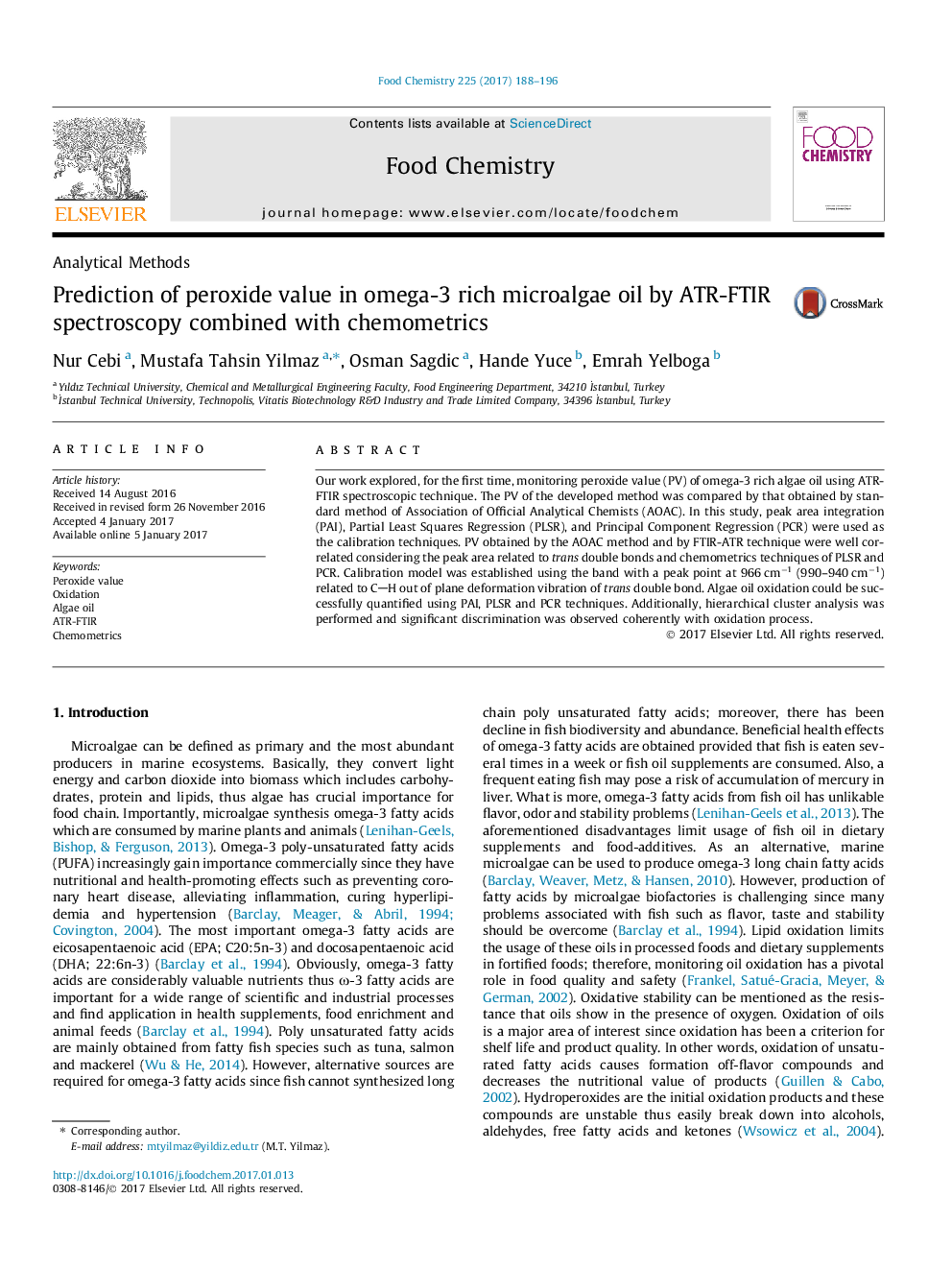| Article ID | Journal | Published Year | Pages | File Type |
|---|---|---|---|---|
| 5133929 | Food Chemistry | 2017 | 9 Pages |
â¢Lipid oxidation limits the usage of omega-3 rich algae oils in processed foods.â¢There is a need for development of effective technique to monitor lipid oxidation.â¢This research explored monitoring peroxide oxidation using ATR-FTIR technique.â¢Algae oil oxidation could be successfully quantified using the FTIR technique.â¢The developed ATR-FTIR technique has a great potential for such quantification.
Our work explored, for the first time, monitoring peroxide value (PV) of omega-3 rich algae oil using ATR-FTIR spectroscopic technique. The PV of the developed method was compared by that obtained by standard method of Association of Official Analytical Chemists (AOAC). In this study, peak area integration (PAI), Partial Least Squares Regression (PLSR), and Principal Component Regression (PCR) were used as the calibration techniques. PV obtained by the AOAC method and by FTIR-ATR technique were well correlated considering the peak area related to trans double bonds and chemometrics techniques of PLSR and PCR. Calibration model was established using the band with a peak point at 966Â cmâ1 (990-940Â cmâ1) related to CH out of plane deformation vibration of trans double bond. Algae oil oxidation could be successfully quantified using PAI, PLSR and PCR techniques. Additionally, hierarchical cluster analysis was performed and significant discrimination was observed coherently with oxidation process.
